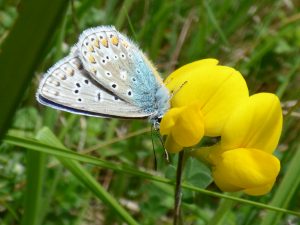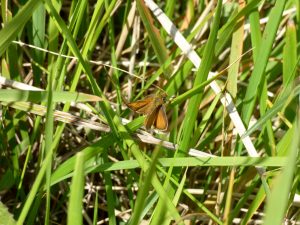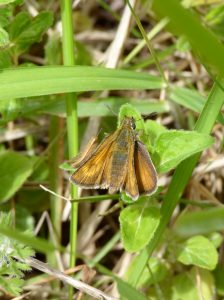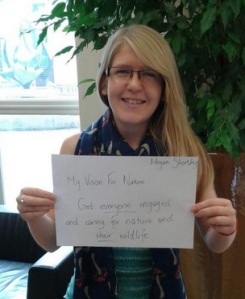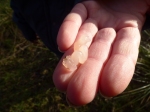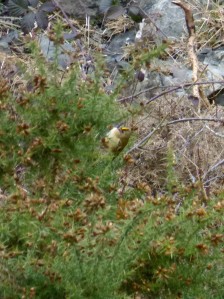Day One of Megan & Matt Go Wild!
Welcome to our joint-blogging series for the Wildlife Trusts’ 30 Days Wild Challenge – you can read more about the campaign and ourselves in our introduction page.
Megan (in coastal Dorset)
As discussed in this week’s blog post, the start to my 30 Days Wild challenge, has seen me distracted from stunning landscapes by a roadside verge … unexpected perhaps, except if you know me. This roadside verge turned out to be rather wonderful in different ways. My mum was intrigued by purple flowers (Bugle), whilst I was practically diving into the vegetation as I peered at the insects there. I have been discussing the challenge with my mum as she is taking part too! She has decided on a theme for her month – identification! She is going to take a photo each day of something she sees a lot, and identify it, and try to remember it.
I was very pleased to find 12 beetles of just one species. Initially I thought it was a Cantharis fusca soldier beetle – a Nationally Scarce insect (found at Lorton Meadows recently), but now I am feeling that it might be a different Cantharis species. I am going to see if I can get a confirmed identification of these beasties. Another thrill was finding an Oak Eggar moth caterpillar (Lasiocampa quercus) – belonging to the best group of insects.
So my 30 Days Wild theme today was an admiration of roadside verges. These habitats are increasingly more important for our wildlife, particularly amongst areas of intense agricultural activity. Well-looked after roadside verges can provide miles and miles of wildflowers for our insects. So take a look at a nearby roadside verge (safely of course), and make sure your local council are looking after it for wildlife!
Matt (at a conference in Germany)
On the first day of 30 Days Wild I awake in a rather wet Bonn, Germany. I’m going to be spending the next four days cooped up in zero daylight conference rooms at the UN World Conference Centre. Putting aside some time for nature in my day will be pretty important to keeping me motivated. It will also be a pretty important reminder to myself about why I’m here – these are the UN climate negotiations, and climate change poses the greatest long term threat to wildlife around the world.
Anyway, my trip began well as even on my train journey over I kept a beady eye peeled for wildlife and happened to spot a hobby just after we crossed into France. 30DaysWild tip number one from me – train journeys can be one of the best wildlife watching opportunities.
As I race from meeting to meeting or when I woke up at 5.30 in my hotel room this morning, I’m glancing tiny bits of wildlife, even in the heart of a conference campus filled with delegates in suits and ties.
Swifts swirled over the park outside my hotel room window.
And I never thought I’d be so glad to see a woodpigeon as I was when I spotted one alight in a tree on a tiny patch of green amongst the architecture.













